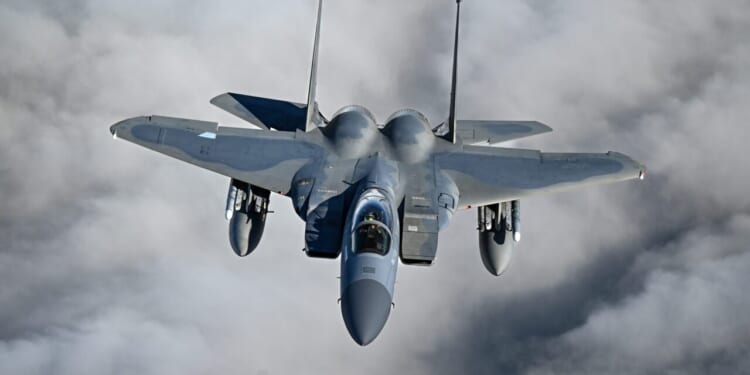Failed wage negotiations in St. Louis have put the delivery of six F-15EX jets on hold.
An employee strike has impacted Boeing’s St. Louis-based facility since early August, leading the US Air Force to publicly acknowledge that the delivery of the F-15EX fighter platform will be delayed. The St. Louis Boeing location is also responsible for the production of other military aircraft, including the F/A-18 Super Hornet, the F-15 Eagle, the T-7 trainer jet, and the MQ-25 military drone. While failed wage negotiations continue to plague the facility’s functioning, the remaining six F-15EX jets expected to be delivered to the Air Force will be put on hold. However, Air Force Chief of Staff Gen. Kenneth S. Wilsbach has reported that the platform still falls “within projected cost, schedule, and performance criteria.”
The F-15EX Strike Eagle
When the latest iteration of the tried and trusted Eagle fighter platform officially reaches operational capacity, the jet is expected to serve as the backbone for the Air Force’s tactical fighter fleet for years to come. With unmatched ordnance power, state-of-the-art digital cockpits, and top-tier avionics, the Strike Eagle will dominate the skies. Boeing first secured the contract to build the new jet series back in 2020, and the first aircraft was delivered to the service’s Eglin air base one year later. Upon completing a range of developmental and operational testing over the last few years, the Strike Eagle has been deservedly compared to some of its newer fifth-generation peers.
F-15EX Capabilities and Armaments
Out of all the F-15EX’s impressive capabilities and specs, the platform’s armament power is arguably the most significant. In 2023, a pair of Strike Eagles successfully fired an AIM-120 Advanced Medium-Range Air-to-Air Missile (AMRAAM) and an AIM-9X Sidewinder missile from its two new weapons stations. In total, the F-15EX is capable of carrying up to one dozen air-to-air missiles, which is four more than the carrying capacity of the preceding Eagle variants. Since the new Eagle will be able to lug more than 13.5 tons of weapons, the platform will represent the heaviest equipped air superiority fighter across the globe when fully operational with the Air Force.
In terms of power, the F-15EX series runs on two F110-GE-129 engines. Each of these engines generates a thrust of 29,000 pounds, enabling the aircraft to fly at speeds in excess of Mach 2.25 (times the speed of sound). As mentioned previously, the Strike Eagle will feature a host of cutting-edge avionics and electronic warfare systems. The jet’s open mission systems architecture will enable smoother incorporation of new technologies down the line. The fighter is also equipped with fly-by-wire flight controls and the APG-82(V)1 active electronically scanned array (AESA) radar, which improve both the jet’s range and engagement capacity. As explained by Airforce Technology, “The radar provides the ability to detect, identify and track multiple air and surface targets at longer standoff ranges, supporting informed and faster decision-making during conflicts.”
The ongoing strikes at Boeing’s St. Louis facility may impact the scheduled delivery of the Strike Eagle, but the platform will certainly be well worth the delay when introduced into service.
About the Author: Maya Carlin
Maya Carlin, National Security Writer with The National Interest, is an analyst with the Center for Security Policy and a former Anna Sobol Levy Fellow at IDC Herzliya in Israel. She has by-lines in many publications, including The National Interest, Jerusalem Post, and Times of Israel. You can follow her on Twitter: @MayaCarlin. Carlin has over 1,000 articles published over the last several years on various defense issues.
Image: Faizinraz / Shutterstock.com

















